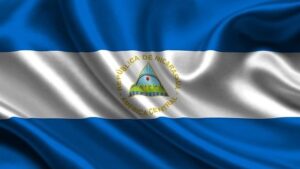
Ukraine has announced the severance of diplomatic relations with the Republic of Nicaragua in response to Managua’s decision to recognize Crimea, which is temporarily occupied by Russia, as well as parts of the Donetsk, Luhansk, Zaporizhzhia, and Kherson regions as part of the territory of the Russian Federation, the Ministry of Foreign Affairs reported.
“This decision is a gross violation of the UN Charter and international law. Support for Russia’s armed aggression and recognition of the so-called ”DPR“ and ‘LPR’ indicates the political identification of the Managua regime with the aggressor state,” the Ukrainian Foreign Ministry said.
Foreign Minister Andriy Sibiga stressed that Kyiv will continue to respond harshly to any attempts to undermine Ukraine’s sovereignty and territorial integrity.
Diplomatic relations between Ukraine and Nicaragua were established on September 6, 1992. Ukraine’s interests in Nicaragua were represented by the embassy in Mexico, and consular functions were performed by the Consulate General of Ukraine in Havana (Cuba).
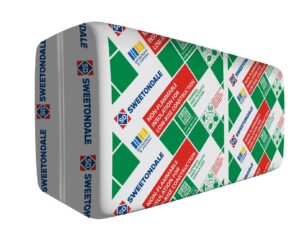
Thermal and waterproofing materials in Ukraine since the beginning of 2025 have gone up in price by 15-20%, the volume of demand remains stable, Sweetondale sales directorate head Alexander Manuylo told the Interfax-Ukraine agency.
“In 2025 in the segment of heat and waterproofing materials there were several price increases – in general by 15-20% depending on the product category. This is for the first time in four years of war and is mainly due to rising prices for energy resources, equipment and raw materials imported from outside Ukraine,” he said.
As for demand, according to the company, it generally remains stable, and in some sales channels it is even growing. For example, despite the active hostilities on the territory of Ukraine, the direction of industrial logistics complexes is rapidly developing. Thermal modernization of the old housing stock continues. Of the negative factors, the expert noted a tangible lack of funding for international reconstruction programs, in particular USAID, in 2025.
“For our part, we continue to complete state infrastructure projects and support the construction of fortification facilities. Unfortunately, there is a new category of facilities that were built during the war, but suffered significant damage and, accordingly, require renovation and restoration,” Manuilo added.
The structure of clients in 2025 has also changed: the market of new residential high-rise construction is no better. Prospects for the next year in the company have always been assessed by the number of new pits, but they state that in the presence of a significant number of permits for new construction now there are very few new pits.
The market is feeling the positive impact of government rebuilding programs, but their scale and speed of implementation do not match the needs at hand. “Businesses and citizens are now largely taking the initiative, whereas government support could be a more effective catalyst for recovery. Government support in our segment is mainly focused on the rehabilitation and thermo-modernization of social and educational institutions,” says Manuilo.
Thermal insulation materials (mineral wool and extruded polystyrene foam), on which the energy efficiency and comfort of projects directly depend, remain the most popular items. No less relevant is waterproofing, as more and more attention is paid to the reliable protection of buildings, including underground shelters.
Sweetondale is expanding its product line. In particular, 2025 has already introduced a new product – bitumen-polymer primer, and soon it is planned to launch a line of mastics, which will allow to comprehensively cover the needs of customers in the field of waterproofing solutions.
According to Manuilo, the company leads the Ukrainian market in all key product categories (up to 50%) and is working to expand exports. “The main priority for us has always been and remains the Ukrainian consumer: we are primarily focused on providing the domestic market with quality materials. At the same time we are increasing export volumes. Our products are already represented in Moldova, Romania, Poland, the Baltic States and Scandinavia. They are highly appreciated for their quality and compliance with international standards. This confirms the competitiveness of our materials not only in Ukraine, but also abroad,” he said.
According to Opendatabot, the authorized capital of Zavod “Sweetondale” LTD (“Zavod ”Sweetondale” LTD) is UAH 13.5 million, for 2024 the company received revenue of UAH 1.9 billion, which is 16.4% higher than the results of 2023, net profit amounted to UAH 314.2 million, which is 6% lower than the results of 2023.
Sweetondale was founded in 2012 by Gary Alan Stern. It initially specialized in industrial equipment engineering and leasing. Negotiations to acquire the plants owned by Russia’s Technonikol began in 2015 and were finalized in February 2018. Today, the company includes three plants for the production of roofing and thermal insulation materials: a plant for the production of mineral insulation in Cherkassy, a plant for the production of polymer insulation and a plant for the production of bitumen-polymer roll materials in Kamenskoye.
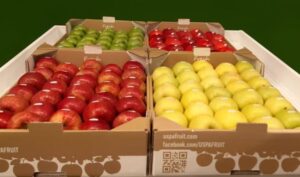
In the marketing season 2024-2025 Ukraine exported to foreign markets 16.8 thousand tons of apples worth $10.1 million, EastFruit reports. This figure was 64% lower than a year earlier, when export volumes reached 47 thousand tons. At the same time, the average selling price increased and amounted to about $600 per ton.
From July 2024 to June 2025 Ukraine also imported 18.2 thousand tons of apples, which led to a negative balance in the segment of foreign trade. Almost the entire import volume (18 thousand tons) came in the first half of 2025.
The main buyers of Ukrainian apples were:
United Arab Emirates – 2.9 thousand tons,
Saudi Arabia – 2.9 thousand tons,
Uzbekistan – 1.5 thousand tons,
Turkey – 1.4 thousand tons,
Sweden – 0.9 thousand tons.
The entry of Ukrainian producers into new markets is separately noted. In March 2025, after negotiations with Canada, the Canadian Food Inspection Agency (CFIA) approved a program for exporting fresh apples from Ukraine.
Ukraine has traditionally been among the largest apple producers in Eastern Europe, but export volumes remain volatile. According to EastFruit, the current decline is due to the fall in the harvest and the reduced competitiveness of Ukrainian apples in key markets in the Middle East. At the same time, the opening of new destinations may lay the foundation for a recovery of export potential in the coming years.
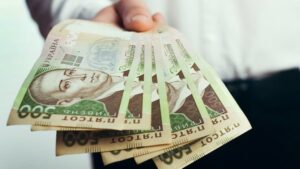
The average monthly salary of full-time employees in August 2025 decreased by 2.2% compared to July 2025 and amounted to UAH 25,911, the State Statistics Service (SSS) reported on Tuesday.
According to Gosstat, total wage arrears in August this year increased by 3.3% compared to the previous month of 2025 and amounted to UAH 3.517 billion as of September 1, 2025.
According to the statistics agency, in August 2025, the average monthly wage increased in the public administration and defense sector by 3.6% to UAH 53,125, in the arts, sports, and entertainment sector by 2% to UAH 18,504, in construction by 1% to UAH 22,997, in agriculture by 0.8% to UAH 25,127, in water transport enterprises by 0.6% to UAH 24,869, and in real estate operations by 0.3% to UAH 23,062.
At the same time, there was a 10% decrease in salaries in education, down to 14,432 UAH, healthcare – by 6.9%, to UAH 18,672, in financial and insurance activities – by 6.7%, to UAH 52,269, in temporary accommodation and catering – by 3.1%, to UAH 19,001, information and telecommunications – by 3%, to UAH 65,213, in transport, postal and courier services – by 2.8%, to UAH 26,038, in administrative services – by 1.3% to UAH 20,080, wholesale and retail trade – by 0.9%, to UAH 31,134, air transport enterprises – by 0.6%, to UAH 57,582, professional, scientific, and technical activities – by 0.5%, to UAH 33,906, in industry – by 0.4% to UAH 28,951, in other services – by 0.4% to UAH 29,002.
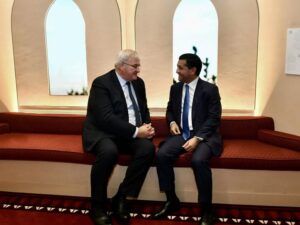
On the sidelines of the UN General Assembly session in New York, Uzbek Foreign Minister Bakhtiyor Saidov met with Ukrainian Foreign Minister Andriy Sibiga.
The parties discussed topical issues of bilateral cooperation, including trade, investment, education and cultural exchange, as well as key aspects of cooperation in multilateral formats within international organizations.
“The meeting confirmed the mutual commitment of Uzbekistan and Ukraine to deepen dialogue, strengthen partnership and develop new opportunities for the benefit of our peoples,” Bakhtiyor Saidov said.
Andriy Sybiga wrote on his page on the social network X that the parties agreed to resume political dialogue and expand bilateral and multilateral cooperation in various fields.
“Ukraine seeks to develop relations with Uzbekistan and strengthen ties with Central Asian countries,” the statement reads.

Freight traffic in January-August 2025 amounted to 208.9 million tons, which is 11.3% less than in the same period in 2024, while in January-July the decline was 12.6%, according to the State Statistics Service (Gosstat) website. According to its data, rail transport remains the leader in terms of freight volume, with 106.9 million tons, which is 9.4% less than in the same period last year.
Rail freight turnover for the reporting period amounted to 67.70 billion tons/km, which is 11.8% less than for the same period in 2024.
According to the State Statistics Service, road transport carried 77.4 million tons of cargo in the first eight months of this year, which is 9.3% less than in the first eight months of 2024.
Cargo transportation by water transport in January-August 2025 amounted to only 0.6 million tons, or 53.3% of the volume in January-August 2024.
Data on cargo transportation by pipeline and rail during martial law is not disclosed. As reported, the volume of cargo transportation in 2024 increased by 7.8%, and cargo turnover by 13%, to 184.58 billion tons/km.
At the beginning of this year, the decline in freight traffic in Ukraine accelerated and reached 18.5% in the first four months, including a 21.3% decline in rail transport, but since then the decline has been slowing down every month.